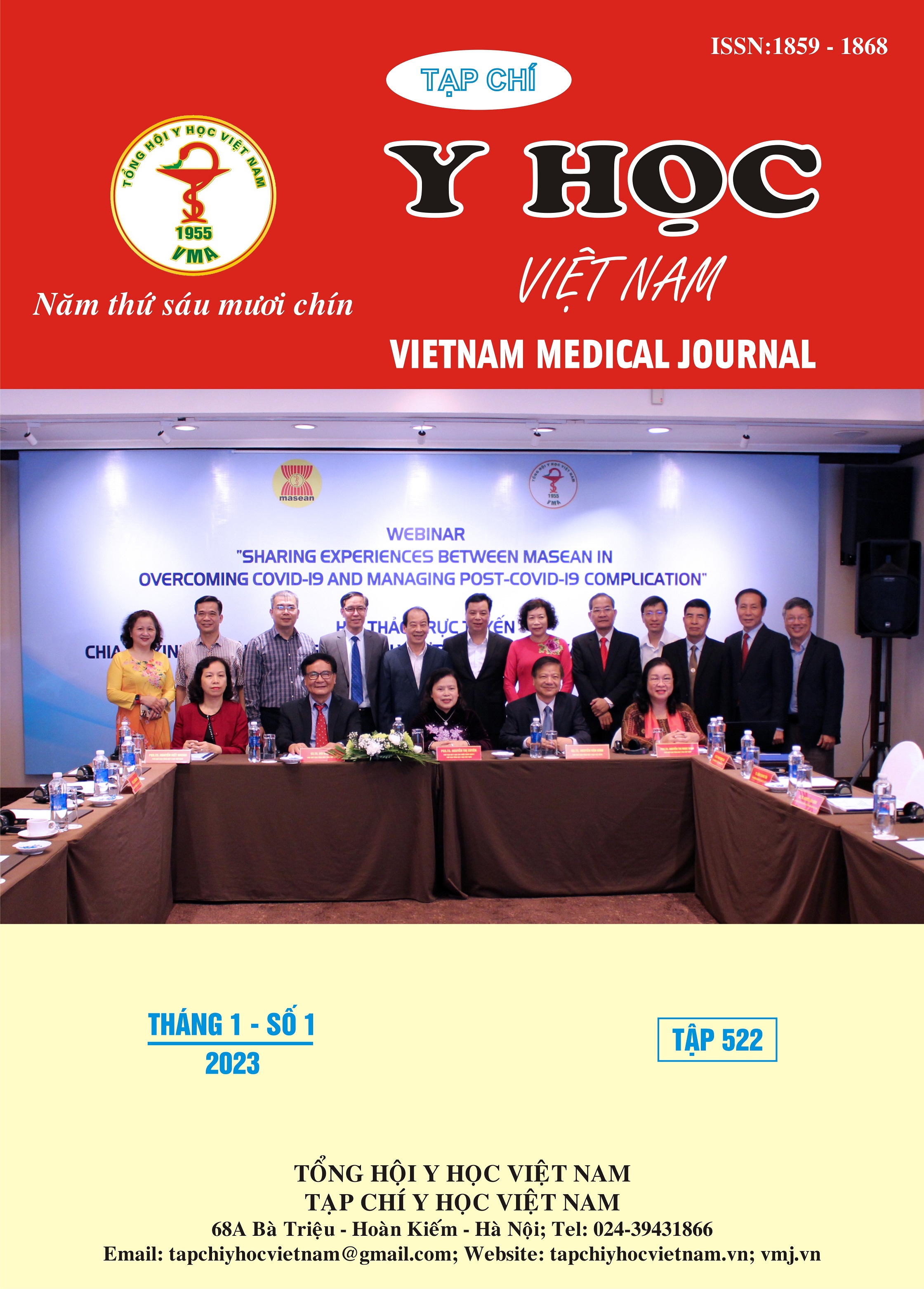ANTIFUNGAL RESISTANCE OF SOME PATHOGENIC CANDIDA STRAINS ISOLATED AT NATIONAL HOSPITAL FOR TROPICAL DISEASES (1/2017-12/2018)
Main Article Content
Abstract
The immediate objective of this study is to describe the distribution of Candida species among Candidiasis patients admitted to the National Hospital of Tropical Diseases (NHTD) between January 2017 and December 2018. We then calculated the proportion of antifungal resistance of Candida isolates. Results: During the study period, from 811 fungi positive specimens we detected 423 Candida isolates, of which 45 isolates were from Candidaemia patients. Among those Candida isolates causing Candidaemia, the most predominant was C. albicans (48,9%, 22/45) followed by C. parapsilosis (22,2%, 10/45), and C. tropicalis (11,1%, 5/45). We identified a Cadidaemia patient who was co-infected by C. metapsilosis and C. parapsilosis group III. Meanwhile, C. tropicalis (53,6%, 104/194) and C. albicans (33,5%, 65/194) were the main cause of urinary tract infection. In particular, we found Candida in sterile body fluids (peritoneal fluid/abdominal fluid, liver abscess) of six patients, C. albicans (83,3%, 5/6). All Candida isolates were tested for antifungal susceptibility using Vitek sytem. Overall, 86,3% (296/343) of Candida isolates were phenotypically susceptible to fluconazole which is a first-line drug to treat Candidiasis, while 94,8% (331/349) of total tested isolates were susceptible to amphotericin B. Antifungal susceptibility testing reveled significant proportions of C. tropicalis (27,3% and 18,2%, respectively) resistant (or at intermediate level) to fluconazole and voriconazole. In conclusion, C. albicans, C. tropicalis were the most common species of invasive fungal infections in hospitalized patients in NHTD. Most of Candida isolates were still susceptible to amphotericin B, echinocadins and flucytosine, but they were less susceptible to voriconazole and fluconazole.
Article Details
Keywords
Candida, antifungal resistance, fluconazole, Amphotericin B, Echinocandins
References
2. Glöckner A. Leitliniengerechte Therapie: Candidämie/invasive Candidiasis. Mycoses. 2010;53(s1):30-5.
3. Cuenca-Estrella M. Antifungal drug resistance mechanisms in pathogenic fungi: from bench to bedside. Clinical microbiology and infection: the official publication of the European Society of Clinical Microbiology and Infectious Diseases. 2014;20 Suppl 6:54-9.
4. Bộ Y tế. Hướng dẫn thực hành kỹ thuật xét nghiệm vi sinh. Nhà xuất bản Y học. 2017.
5. De Pauw B, Walsh TJ, Donnelly JP, Stevens DA, Edwards JE, Calandra T, et al. Revised Definitions of Invasive Fungal Disease from the European Organization for Research and Treatment of Cancer/Invasive Fungal Infections Cooperative Group and the National Institute of Allergy and Infectious Diseases Mycoses Study Group (EORTC/MSG) Consensus Group. Clinical Infectious Diseases. 2008;46(12):1813-21.
6. Eggimann P PD. Candida colonization index and subsequent infection in critically ill surgical patients: 20 years later. Intensive Care Med. 2014;40(10):1429-48.
7. Nguyễn Nhị Hà. Tình hình nhiễm nấm xâm nhập và mức độ đề kháng thuốc kháng nấm của các chủng nấm phân lập tại Bệnh viện Bạch Mai từ 2013-2017. Luận văn Thạc sĩ y học. Đại học Y Hà Nội. 2017.
8. Pappas PG, Kauffman CA, Andes DR, Clancy CJ, Marr KA, Ostrosky-Zeichner L, et al. Clinical Practice Guideline for the Management of Candidiasis: 2016 Update by the Infectious Diseases Society of America. Clinical infectious diseases. 2016;62(4):e1-50.


